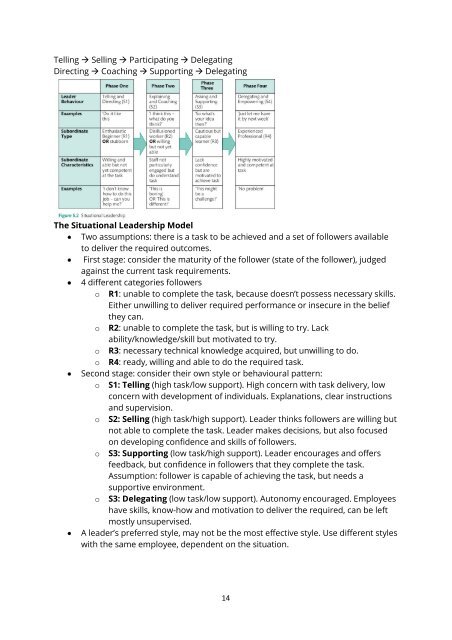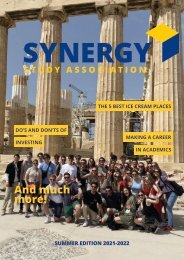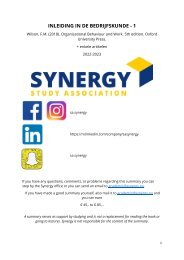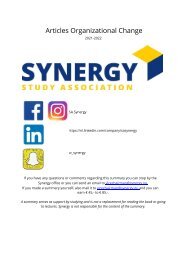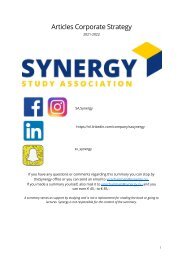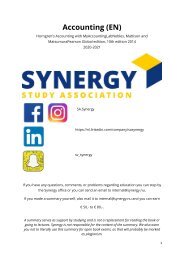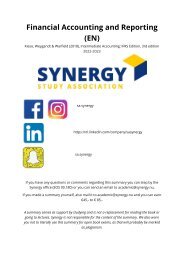Leadership in Organizations
You also want an ePaper? Increase the reach of your titles
YUMPU automatically turns print PDFs into web optimized ePapers that Google loves.
Tell<strong>in</strong>g → Sell<strong>in</strong>g → Participat<strong>in</strong>g → Delegat<strong>in</strong>g<br />
Direct<strong>in</strong>g → Coach<strong>in</strong>g → Support<strong>in</strong>g → Delegat<strong>in</strong>g<br />
The Situational <strong>Leadership</strong> Model<br />
• Two assumptions: there is a task to be achieved and a set of followers available<br />
to deliver the required outcomes.<br />
• First stage: consider the maturity of the follower (state of the follower), judged<br />
aga<strong>in</strong>st the current task requirements.<br />
• 4 different categories followers<br />
o R1: unable to complete the task, because doesn’t possess necessary skills.<br />
Either unwill<strong>in</strong>g to deliver required performance or <strong>in</strong>secure <strong>in</strong> the belief<br />
they can.<br />
o R2: unable to complete the task, but is will<strong>in</strong>g to try. Lack<br />
ability/knowledge/skill but motivated to try.<br />
o R3: necessary technical knowledge acquired, but unwill<strong>in</strong>g to do.<br />
o R4: ready, will<strong>in</strong>g and able to do the required task.<br />
• Second stage: consider their own style or behavioural pattern:<br />
o S1: Tell<strong>in</strong>g (high task/low support). High concern with task delivery, low<br />
concern with development of <strong>in</strong>dividuals. Explanations, clear <strong>in</strong>structions<br />
and supervision.<br />
o S2: Sell<strong>in</strong>g (high task/high support). Leader th<strong>in</strong>ks followers are will<strong>in</strong>g but<br />
not able to complete the task. Leader makes decisions, but also focused<br />
on develop<strong>in</strong>g confidence and skills of followers.<br />
o S3: Support<strong>in</strong>g (low task/high support). Leader encourages and offers<br />
feedback, but confidence <strong>in</strong> followers that they complete the task.<br />
Assumption: follower is capable of achiev<strong>in</strong>g the task, but needs a<br />
supportive environment.<br />
o S3: Delegat<strong>in</strong>g (low task/low support). Autonomy encouraged. Employees<br />
have skills, know-how and motivation to deliver the required, can be left<br />
mostly unsupervised.<br />
• A leader’s preferred style, may not be the most effective style. Use different styles<br />
with the same employee, dependent on the situation.<br />
14


